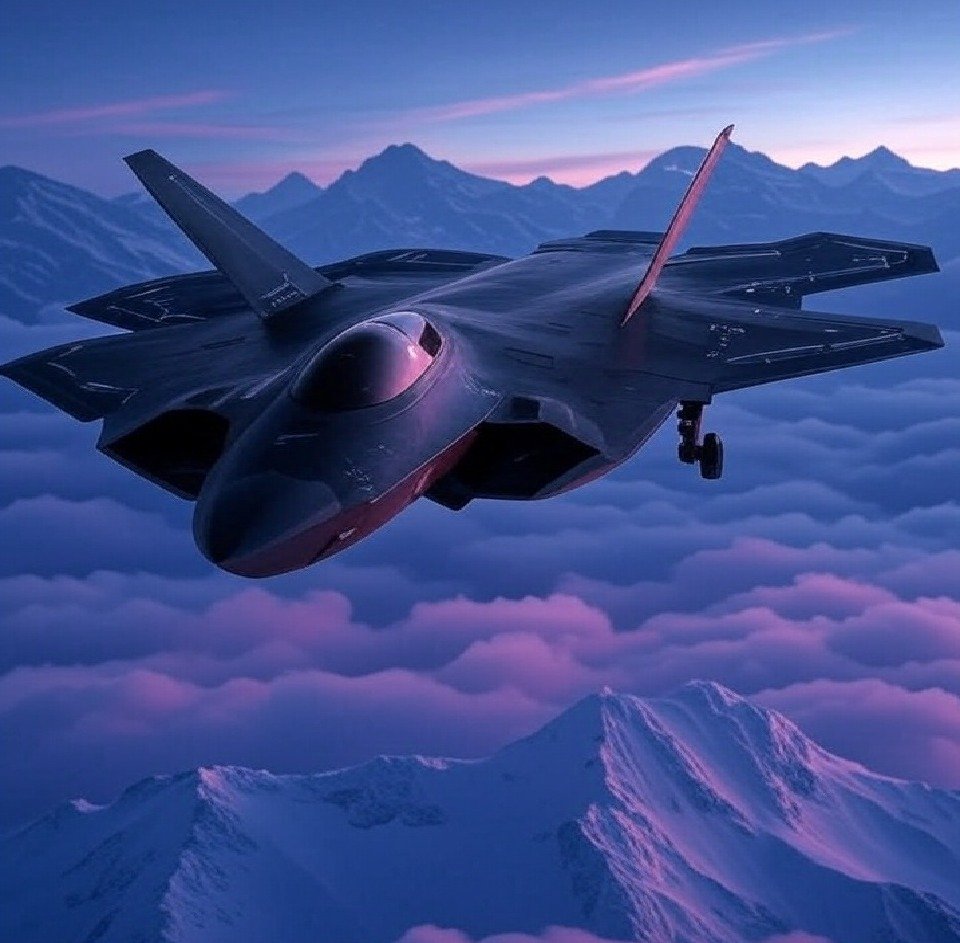A Chinese-origin Pakistani combat aircraft shot down at least two Indian warplanes on Wednesday, two U.S. officials told Reuters, without providing any evidence.
One U.S. official, speaking on condition of anonymity, claimed Pakistan could have used J-10C fighters to launch air-to-air missiles against Indian jets, bringing down at least two. Another official told Reuters that at least one Indian jet that was shot down was a Rafale aircraft.
Earlier, Pakistani Foreign Minister Ishaq Dar told the National Assembly that the J-10C shot down five Indian fighter jets, three of which were Rafales. Pakistan has been unable to furnish any evidence.
Before the Reuters claim, another “unidentified” French official later told CNN that Pakistan had downed an Indian Rafale fighter. This apparent confirmation has been linked to reports that an aircraft had crashed in Bhatinda, Punjab.
In both cases, the media is quoting “unidentified” officials.
The Indian military has yet to comment on these claims, but IAF experts that EurAsian Times has talked to have called them disinformation as Islamabad has not provided evidence, such as a cockpit recording, radar data, missile telemetry, etc.
Chinese military experts claim that its advanced platforms, armed with cutting-edge Chinese weaponry like the PL-15 missile, hold a technological edge over India’s Rafales. Is this bold assertion grounded in reality, or is it strategic posturing in a region teetering on the brink of escalation?
Pakistan’s New Arsenal: J-10C & JF-17 Thunder
Pakistan’s acquisition of Chinese weaponry is a cornerstone of its strategy to counter India’s growing military prowess. The Chengdu J-10C, a 4.5-generation multirole fighter inducted into the PAF in 2022, is touted as Pakistan’s answer to India’s Dassault Rafale inducted into the IAF in 2020.
Powered by the Chinese WS-10B engine and equipped with an Active Electronically Scanned Array (AESA) radar, the J-10 C can carry the PL-15, which boasts a range of up to 200-300 kilometres. The PAF has procured at least 25 J-10Cs and plans to acquire over 100 J-10Cs by the early 2030s, aiming to replace its aging Mirage III/V fleet.
Supported by Electronic Warfare (EW) suites, J-10C fulfills air superiority, interception, and precision strike roles in a single platform and can significantly elevate Pakistan’s aerial capabilities.
The JF-17 Thunder Block III, also known as the FC-1 Xiaolong (“Fierce Dragon”) in China, is a joint venture between Pakistan Aeronautical Complex (PAC) and China’s Chengdu Aircraft Corporation (CAC). It is a lightweight multirole fighter designed for affordability and versatility.
The Block III variant enhances Pakistan’s BVR capabilities with an AESA KLJ-7A radar and PL-15E missile integration. The PAF operates approximately 45–50 JF-17 Block IIIs, with a total fleet of around 400 combat aircraft.
The PAF also commands a formidable airborne surveillance capability, centered on a fleet of nine Saab 2000 Erieye AEW&C aircraft, making it one of South Asia’s most capable AEW&C operators.
This Erieye platform is equipped with AESA radars. It provides 450km of airspace coverage, allowing real-time data linking with frontline fighters, essential for early warning, target cueing, and force coordination.
India’s Rafale: A Formidable Adversary
India’s Rafale, a 4.5-generation twin-engine fighter, is a battle-proven asset operated by multiple nations, with combat experience in Afghanistan, Mali, Syria, Iraq, and Libya. Its ‘omnirole’ design excels against both conventional and asymmetric threats, leveraging multi-sensor data fusion for precise, real-time situational awareness.
The Modular Data Processing Unit (MDPU) processes and shares battlefield data via secure links, ensuring seamless integration of new weapons for sustained combat relevance.
The Indian Air Force (IAF) operates 36 Rafales, equipped with the ramjet-powered Meteor missile, which has a range exceeding 150 km, and the RBE2 AESA radar, which has a detection range of over 200 km.
The SPECTRA electronic warfare suite enhances survivability, while 13 India-specific enhancements, including advanced EW systems and Meteor beyond-visual-range (BVR) missiles, tailor the aircraft to counter regional threats from Pakistan and China.

Operation Sindoor: A Catalyst For Escalation
In retaliation for the brutal terror attack in Pahalgam, India launched ‘Operation Sindoor’, a targeted military strike on nine terrorist infrastructure sites; four locations in Pakistan and five locations in the Pakistan-occupied Kashmir on May 7.
India described the strikes as “focused, measured, and non-escalatory.”
Rafale jets, armed with SCALP cruise missiles (450 km range, Mach 0.95) and HAMMER precision-guided munitions (70 km range, jam-resistant), struck terror camps linked to Lashkar-e-Taiba, Jaish-e-Mohammed, and Hizbul Mujahideen, including strongholds in Muridke and Bahawalpur. The advanced navigation of SCALP (INS, GPS, terrain-referenced) and HAMMER’s all-weather precision underscored India’s strike capability.
Pakistan’s swift and defiant response called the military action a ‘blatant act of war.’ Prime Minister Shebaz Sharif said that his country has every right to give a “befitting reply.”
Pakistan’s Defense Minister Khawaja Asif claimed the military downed five Indian fighter jets, including three Rafale jets, one MiG-29, and one Su-30, as well as a drone, in “self-defense.”
Amid this escalation, PAF officials, including retired Air Commodore Khalid Farooq, have asserted that the J-10C surpasses India’s Rafale in critical combat capabilities, particularly in Beyond-Visual-Range (BVR) engagements.
The PAF released footage on 26 April showcasing JF-17 Block III jets armed with long-range PL-15 missiles. Is the PAF’s military and psychological strategy a signal of readiness to counter India’s air power superiority?

J-10C & JF-17 vs. Rafale: A Battle Of Aerial Prowess
The PAF’s claim of J-10C’s superiority hinges on specific technical advantages. The aircraft’s PL-15 missile may outrange the Meteor in certain scenarios, and its speed over Mach 5 could provide an edge in hit-and-run tactics.
An active radar-guided long-range air-to-air missile (AAM), PL-15 is now viewed by analysts as a rival to the American AIM-120D AMRAAM and the European MBDA Meteor missile, which are integrated into India’s Rafale.
Although the JF-17 Block III is less advanced in terms of technology, avionics, and combat capabilities, it benefits from its cost-effectiveness (approximately US$32 million per unit compared to the Rafale’s US$80 million) and numerical strength. The lower cost enables the production and deployment of greater numbers of JF-17s.
Pakistan’s Defence Minister Khawaja Asif claimed that a combination of Pakistan Air Force aircraft, including F-16s, J-10Cs, and JF-17s equipped with electronic warfare (EW) capabilities, successfully jammed the radars of four Indian Rafale jets near the Line of Control (LoC) earlier this month.
However, assertions regarding the J-10C’s ability to jam Rafale radars remain unverified and are met with skepticism by defense analysts, who argue that Rafale’s overall package is superior.
Air Marshal Anil Chopra (Retd) notes that the Rafale’s combat experience, advanced EW suite, and MICA-IR missile (with imaging infrared seeker) give it unmatched versatility.
The Rafale’s twin-engine design ensures better reliability and payload capacity, while the J-10C’s single WS-10B engine has a limited service life of 700 hours. The JF-17’s smaller radar antenna limits the PL-15E’s effective range to 100–120 km, underutilizing its potential.
The Rafale’s Thales RBE2, with approximately 838 T/R modules, and the SPECTRA system are considered superior to the J-10CE’s Chinese KG600 jammers, which lack the sophistication of Western electronic warfare (EW) systems. Nevertheless, the J-10C’s AESA radar is competitive, potentially offering a longer detection range due to approximately 1,200 T/R modules, but it lags in its EW capabilities.
The confidence of PAF stems from the J-10CEs and JF-17s’ advanced avionics and long-range missiles. Air Commodore Farooq emphasized their “first-look, first-shot” capability, claiming the J-10CE’s AESA radar and its PL-15E missile outmatch the Rafale’s RBE2 AESA radar and Meteor missile.
However, Pakistan’s fleet of 25 J-10Cs and 40–50 JF-17 Block IIIs is numerically inferior to India’s 36 Rafales, 260+ Su-30MKIs, and other platforms. This disparity limits the Pakistan Air Force’s (PAF) ability to conduct large-scale deployments, confining it to defensive or limited offensive operations.
- Via: ET Desk / Saumya Mehta
- Mail us at: editor (at) eurasiantimes.com







